As summer vacation starts, many of us will be traveling and visiting museums. When I worked at the Smithsonian, the galleries would stage big blockbuster exhibitions during the busy summer months. What are your summer holiday plans? Does it involve museum-going? I’m looking forward to visiting the Winslow Homers at the Portland Museum of Art in Maine, and returning to the Louisiana Museum on the Baltic coast of Denmark.
Earlier this year, Tom and I visited two very different but equally fine museums in the Netherlands. We only had 2 1/2 days and, being short on time, selected museums that were interesting, manageable and represented the distinct points of views of their founders.
The Kroller-Muller Museum, located in De Hoge Veluwe National Park in Otterlo, houses a stellar collection of artwork by Vincent van Gogh – the world’s second largest. In addition, there is an impressive sculpture garden park with pieces by Rodin, Moore, Hepworth, Serra, Dubuffet and more. The core of the collection was acquired by heiress Helene Kroller-Muller during the early 20th century.
Dramatic sculptures outside the entrance to the Kroller-Muller Museum. Above is K-piece by Mark Di Suvero (1933).
It was the special exhibit Vincent is Back that we anxiously wanted to see.
Many of the paintings and drawings in this show are from Van Gogh’s Dutch period. Because of their sensitivity to light, they are seldom exhibited. These somber pieces are quite different from the exuberant works he painted in France.
Next to the dark Dutch period works, Van Gogh’s Provence paintings are even more vibrant and lively. Did you know he chose still-life subject matters because he couldn’t afford models?
Below is Terrace of a Cafe at Night (Arles, September 1888), the very first starry night scene Van Gogh painted.
Leaving the Van Gogh exhibit, we toured the permanent collection and came across two Piet Mondriaan paintings. While I recognized the bottom piece as a Mondriaan, I had no idea he painted Impressionist landscapes, such as the top painting, early in his career.
Magnificent sculptures inside and outside within the impressive 61 acre park – one of the largest sculpture gardens in Europe!
Above is the sensual Cloud Shepherd by Jean Arp (1953), and below is the very moving Niobe by Constant Permeke (1951).
After our visit, we drove to the city of Maasstricht, and wandered the historic streets. Here are a few photos taken around Vrijthof, the main square.
It was early spring, and the pollarded Plane trees were still bare. Quite haunting!
The looming red tower of St. John’s Church.
* * * * * * *
Named after Pieter Teyler van der Hulst, the
Teylers Museum in Haarlem is actually the oldest museum in the Netherlands. Teyler was a powerful and wealthy merchant, banker and champion of the Enlightment. Teyler left his collection of books, artwork, fossils, minerals and scientific instruments to promote science as well as the arts. Thus was born one of Europe’s most fascinating cabinets of curiosities!
We absolutely loved Haarlem! It was like visiting one of Veermeer’s paintings.
The Teylers Museum is unlike any we’ve seen. The resplendent Oval Room, which dates from 1784, is lavishly paneled and filled with scientific instruments, gems and minerals.
Look at the amazing sun bleached oak paneling!
Now THIS is salon style! More is definitely more here in the two Paintings Galleries featuring Dutch works from 1780 – 1930.
Below is the Fossil Room with case after case of corals and fossils. Notice the ornate cast iron floor grate running the length of the room.
And here are a few photos around town.
This charming building dates to 1548.
Even the street brickwork is fantastic!
I hope you’ve enjoyed these tours. Have a wonderful summer, and happy travels!! ~ Loi

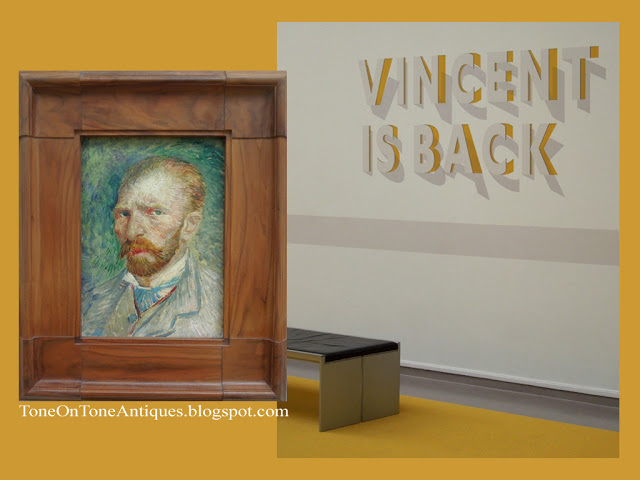
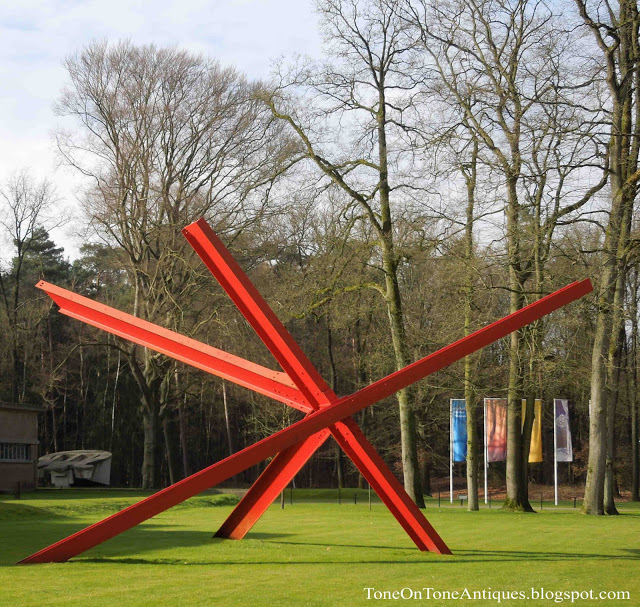
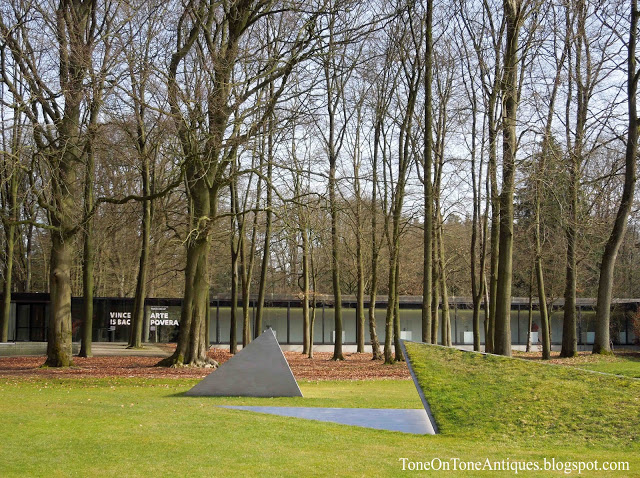
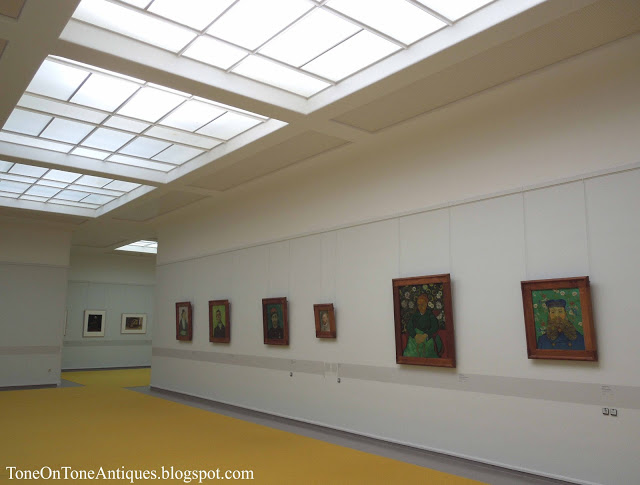
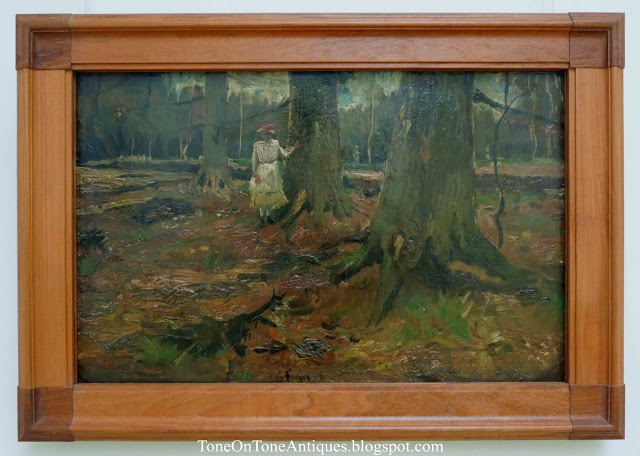
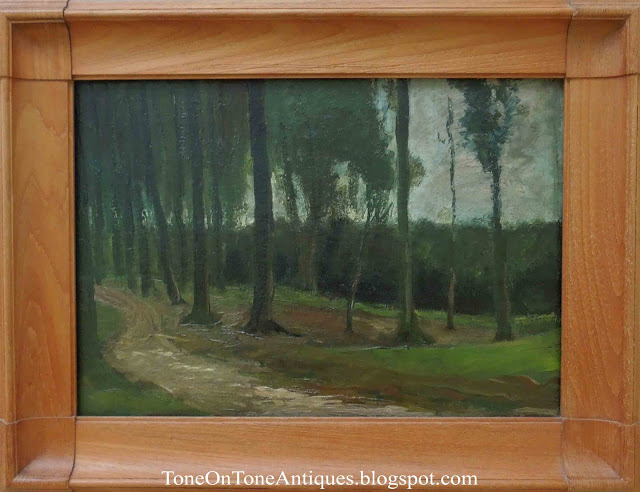
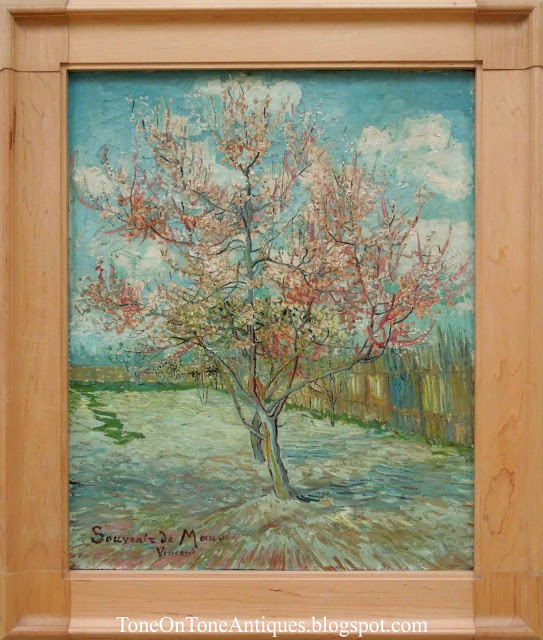
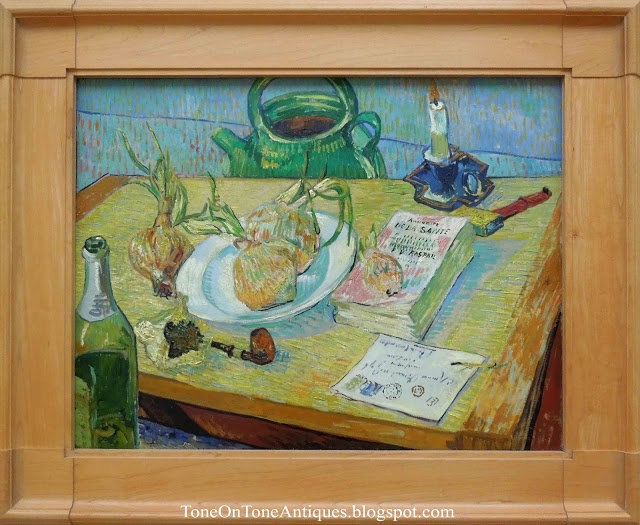
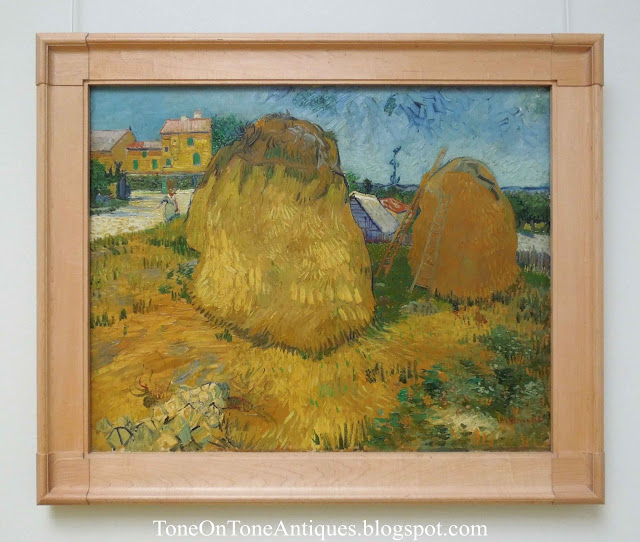
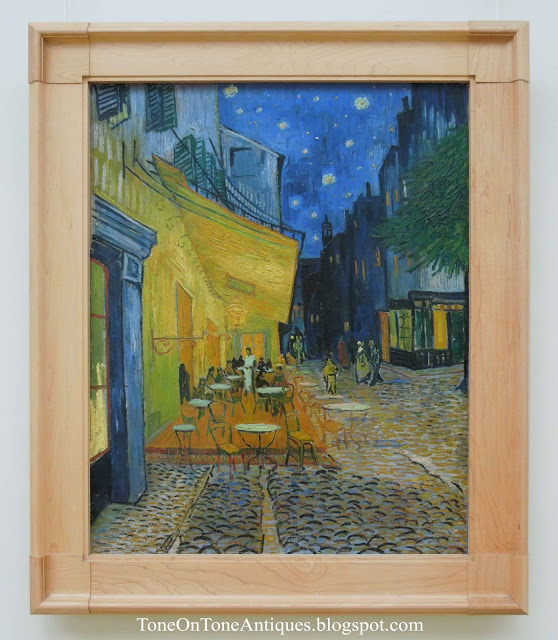
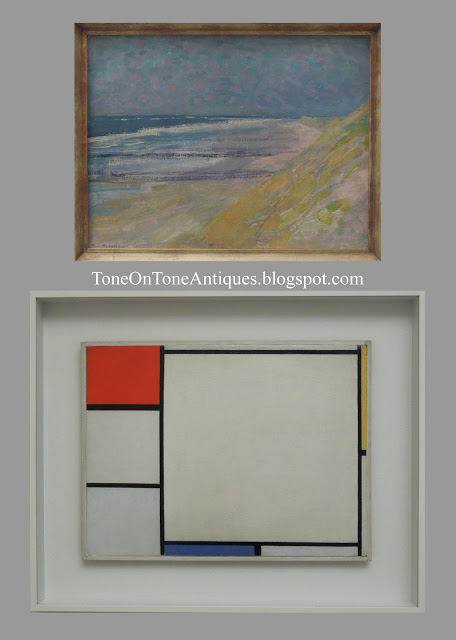
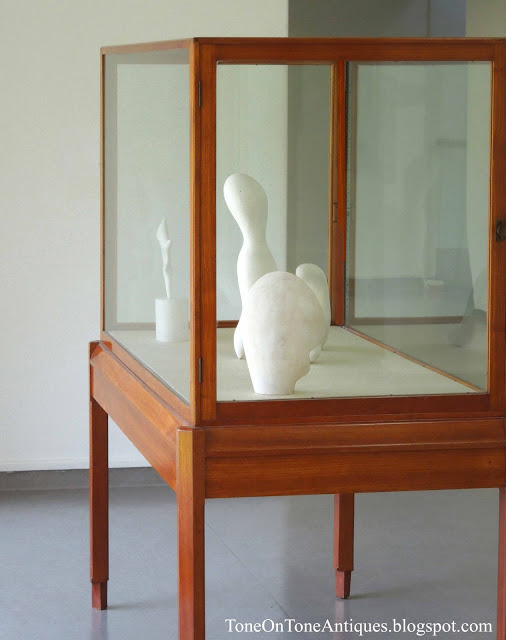
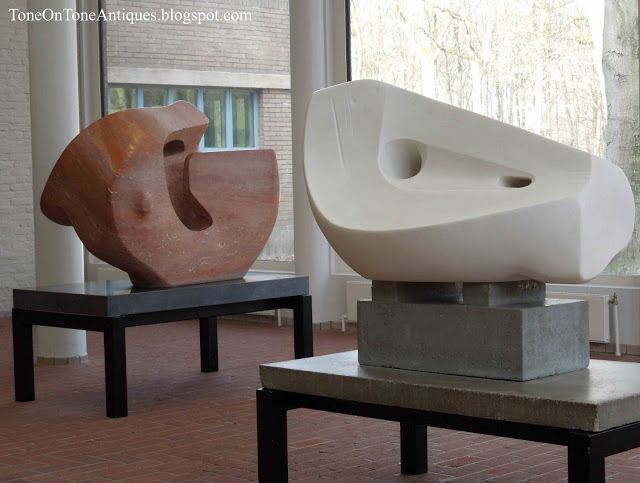
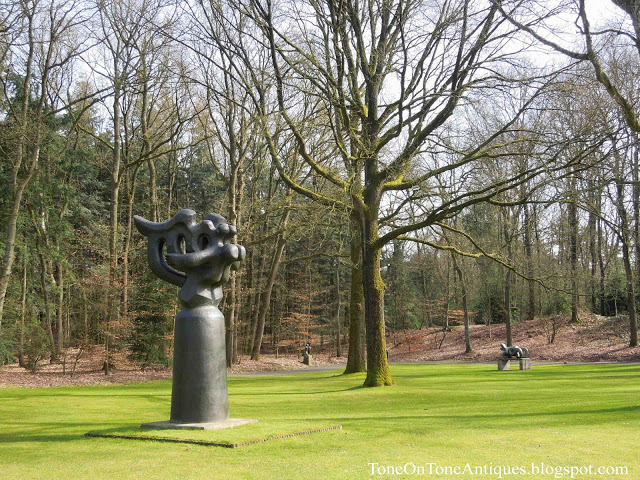
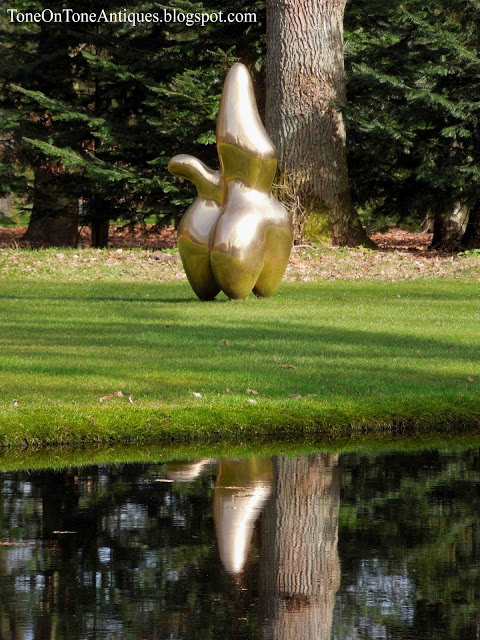

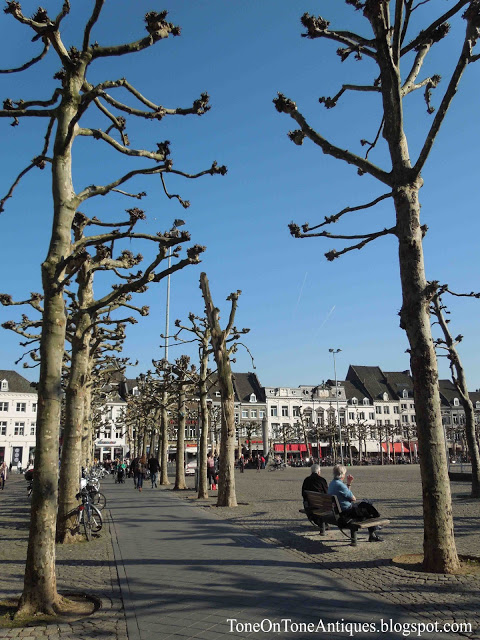
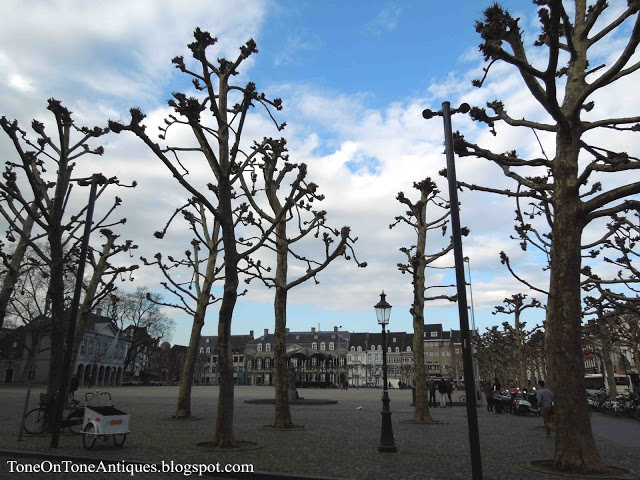
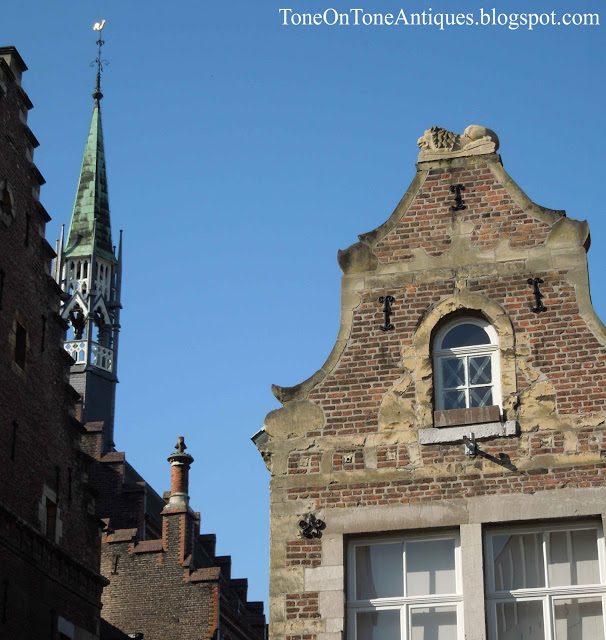
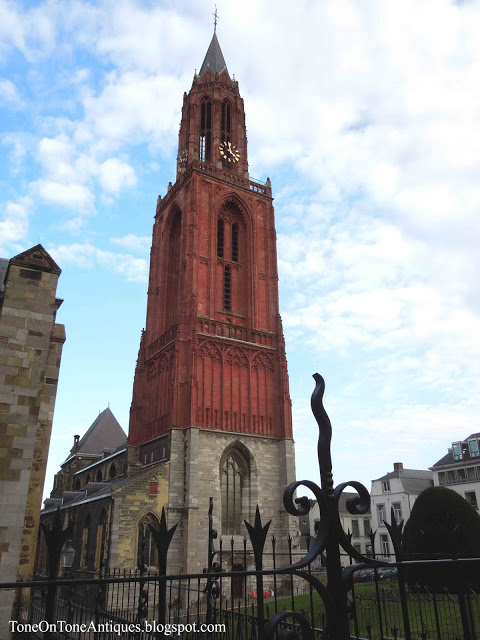
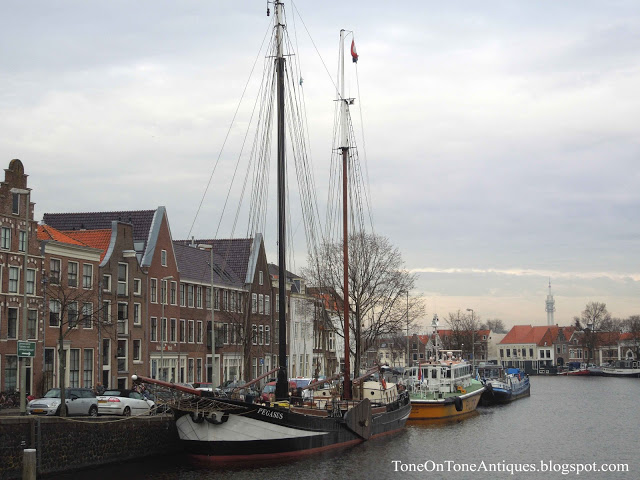
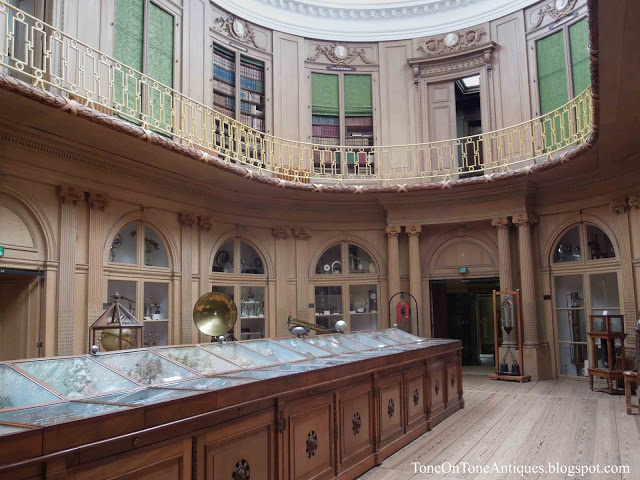
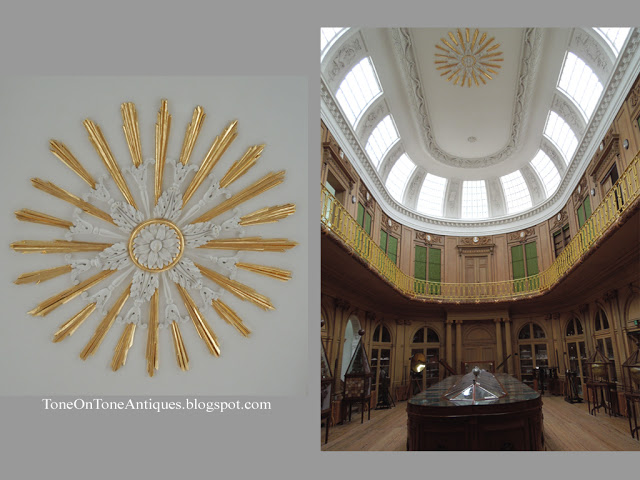
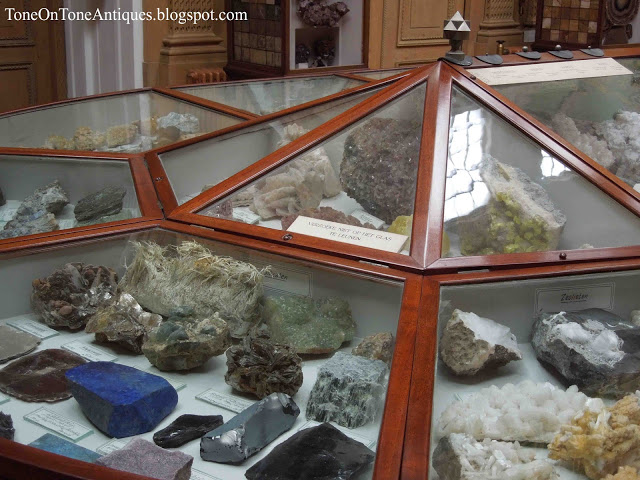
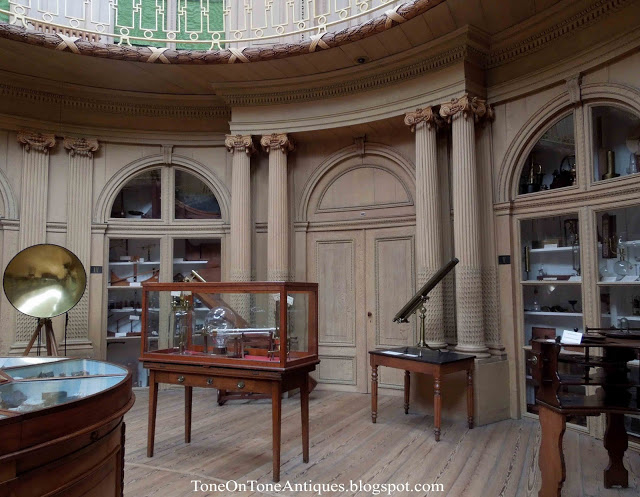
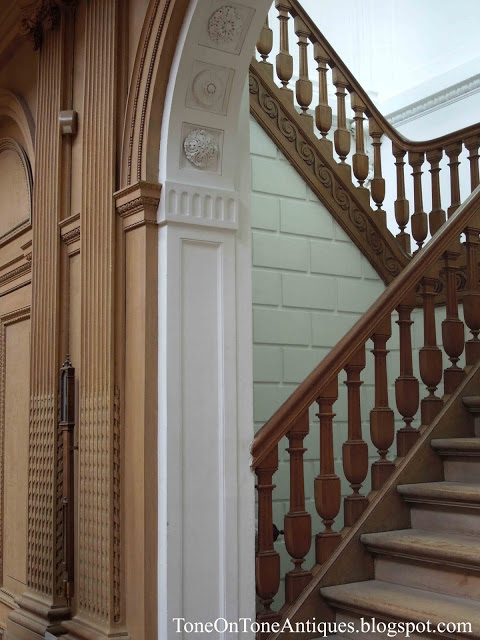
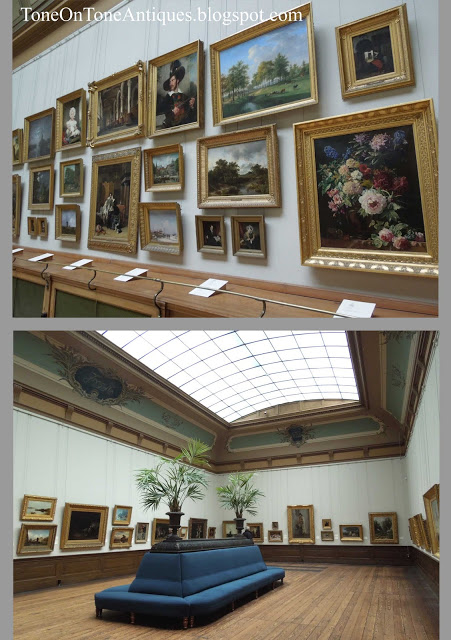
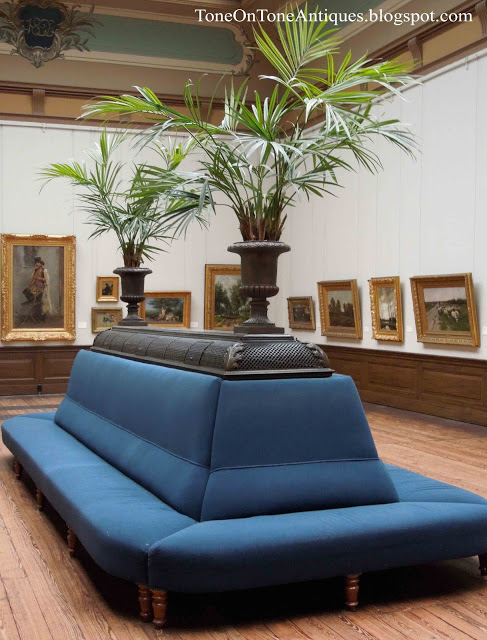
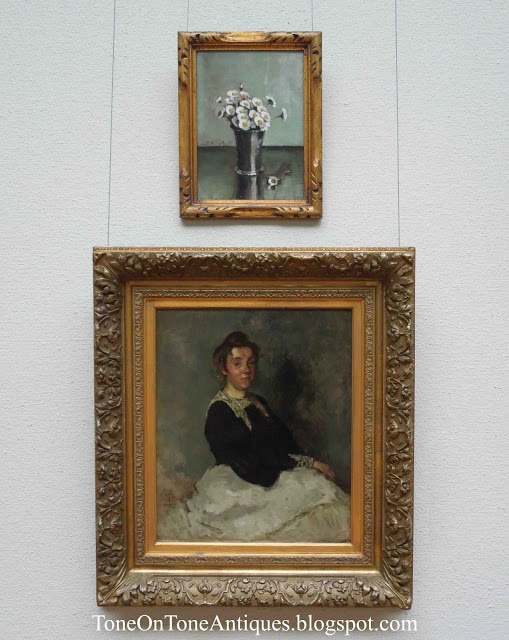

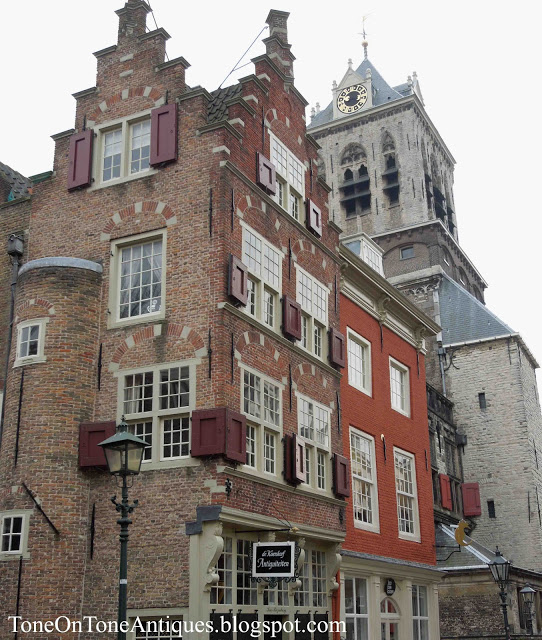
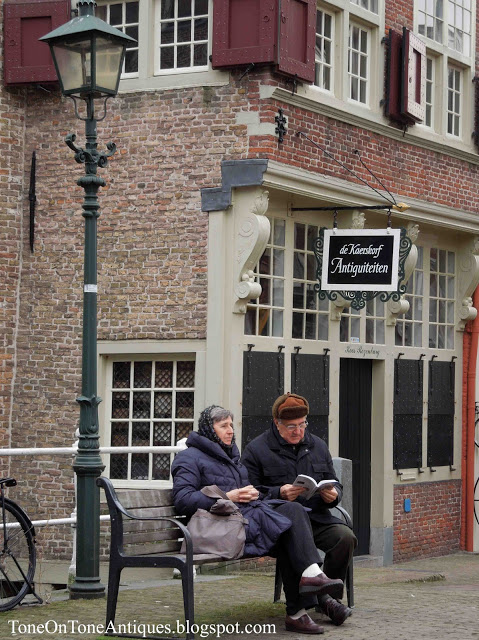
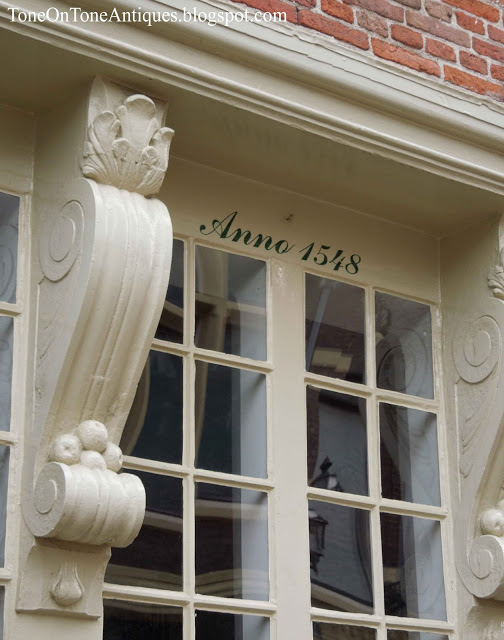
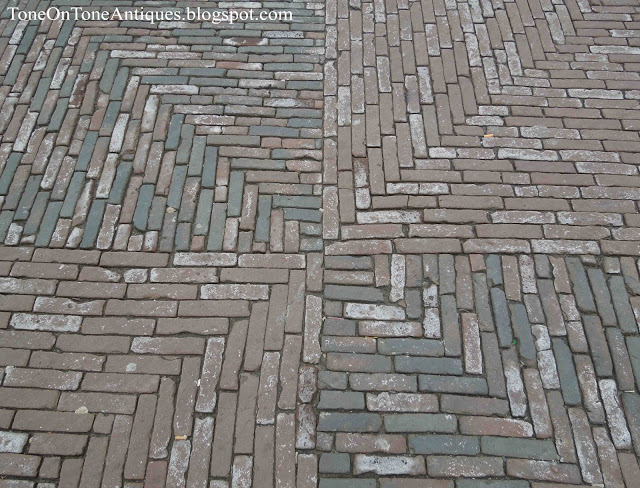


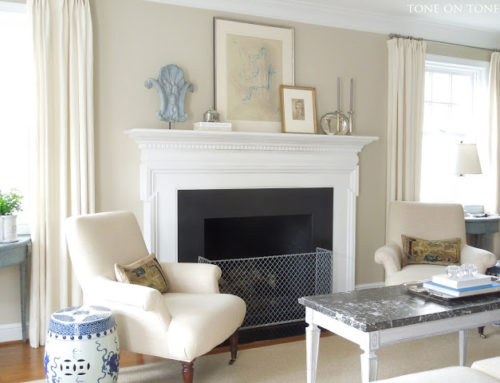
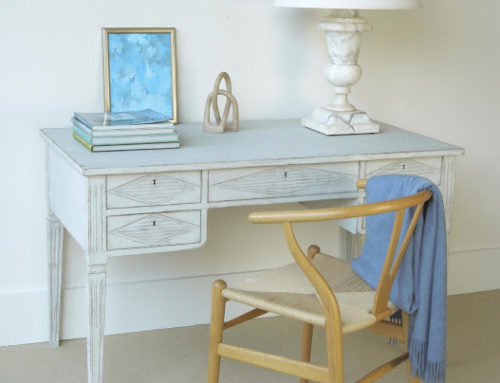
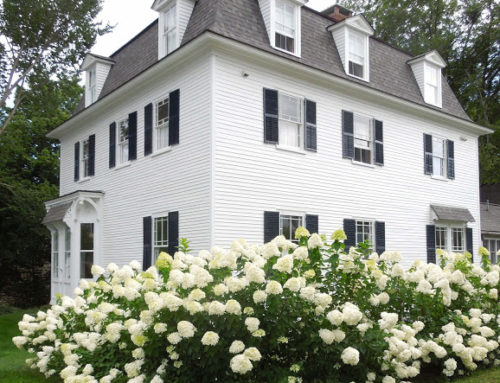

How did you get all of this pictures sans people?! I guess you were there on a quiet day!
By being patient 🙂 Actually, we were there on quiet days!
Loi, you have inspired me for the millionth time with this art post and the scenes of the Netherlands. I love that huge sculpture garden where there is room to do each piece justice, and not crammed all together with other art. Very cool and lots of good content here! I haven't seen any impressionist pieces of Mondrian! Those Plane trees are a hoot and scary looking. I love taking virtual tours with you to places I haven't been. You do us all a world of good! Have a great next trip and be safe. I hope we can get together again soon.. I need my TnT fix!
xo Nancy
Powellbrowerhome.com
Dear Loi,
You save me so much money 🙂 I don't have to travel…you do it for me. !!!
I love seeing the world's Beauty through your eyes! Thank you so, so much for educating me ! I can't tell you how much I have learned from you!
Thank you, thank you.
Fondly,
Patty
Yes, our summer plans do involve museum touring. We are going to London and will be visiting many museums there. Do you have any favorites that we should definitely put on the list?
I love all the big ones in London. And my favorite is the V&A! I've not been to the Tate Modern. Let me know if you make it there. Have fun!
So wonderful to see your travel photos! We just returned from our trip to Copenhagen, Oslo, Bergen and Prague. I too found the bare pollarded plane trees an interesting site during our visit. We are just now uploading all of our photos and I hope to share some soon on my blog. Would have loved to seen the Vincent is Back exhibit. We did visit the Van Gough museum in Amsterdam a few years ago but I don't recall seeing these particular pieces. While we spend a great deal of time in the museums, my favorite sites are always the architecture, gardens and people!
Dear Loi,
Nice photos! They gave me very nice memories.
Next time you are in the Netherlands you should try and visit the Rijksmuseum in Amsterdam which has recently reopened. I love Haarlem too. There is a very nice Franz Hals Museum there. As for us we are off to Barcelona next Friday for a few days. I am looking forward to that. Museums and Art Galleries are high on the priorities list. After that we are going back to England for four weeks and once again a lot of museums, art galleries and of course National Trust and English Heritage visits are on the cards!
You were in Maastricht? You could have popped over to visit us!
I hope you both have a safe trip Loi. See you in the blogging world when you return.
Kirk
god i love a good moody dutch painting! that would be heaven! looks like a lovely trip so far!
Hi Loi,
What an interesting tour around the Netherlands and the city of Haarlem! The architecture is absolutely stunning and when it is in such close proximity to water, well, it doesn't get better than that! Your photos have given us access to magnificent museums, quaint little urban streets, and a sense of artistic accomplishment that prevails in this progressive country. Thanks so much for taking us along on this most stylish tour!
I am sure your summer plans include a trip to Baltimore to visit the Ladew Gardens and the beautiful Halcyon Farm!!! xoxoxo
Hello Loi!
I am so happy you are such a good photographer because you bring your travels to life for us! And I have always been a huge Van Gough fan; I loved seeing these works!
Have a lovely summer, as well.
Best,
Mimi
Bleached oak paneling in Teylers Museum is beautiful. I have always been fascinated by Van Gogh, since his life had a great affect on his art one can see the evolution it goes through.
Happy summer.
I have never been to the Netherlands. I can tell from your photos that I am missing out! Looks like you had a beautiful and inspiring trip.
HAPPY am I as I see not only the remarkable history of art and architecture, but as I feel the TONE ON TONE palate of peace. Oh Loi, how I long to go to the Netherlands to see these museums, the homes on the canals and see blog friends. To see VanGogh's art up close like that would be surreal, adding to the charm. How fabulous of you to share with us.
No traveling for us this year; I need to find a job first!!!! Happy travels my friend, Anita
Loi I am so inspired to see the museums wherever I travel. It is a favorite part of a city for me. If I do not go on a special trip this year.
I will return to The Nelson Atkins Museum, The Bloch Museum, The Kemper Museum of Contemporary Art,and The Nerman Museum, all right here in Kansas City!
All of the images are so mesmerizing…going back in time and then coming back to present day.
xoxo
Karena
Art by Karena
A wonderful journey courtesy your superb photos Loi – and what a treat to see the early Van Gogh paintings.
wow! amazing photos and experiences! my summer travels will not be quite as exciting- atlanta and seabrook island! 😉
Such a fascinating tour Loi! Your photos of the Van Gogh paintings turned out so well. There is a "new" Winslow Homer exhibition and renovated studio in Prouts Neck, ME that Jon and I want to visit this summer. You probably already know this since it's owned by the Portland Museum. Here is a link to a NY Times article about the studio: http://www.nytimes.com/2012/11/02/arts/design/winslow-homers-comfortably-rugged-maine.html?_r=0. I also want to visit Snug Harbor Farm again this year. I didn't buy any topiaries for fear of killing them, but maybe I'll give one a try this year!
-Deborah
Great photos Loi! That salon was amazing. Van Gogh is actually one of my favorites. There's something about his crazy color combinations that I just love. The architecture you showed was amazing. Thanks for sharing your travel photos. I loved them!
Susan
Van Gogh is one of my favorite artist…love his use of color and brush strokes…his paintings are gorgeous!
In Amsterdam, I have spent two whole days visiting the Van Gogh's museum and I will do it all over again but I will at least have a whole week because I've been there before its renovation.I've also visited the Louisiana Museum of modern art, north of Copenhagen where I enjoyed not only the master pieces but also its location! So idyllic!Oh Loi, you promote "beauty" not only by the art pieces but by your own concept of living.Thanks for sharing, really great!
I like your bare pollarded trees pictures. I have quite a collection from Brussels and France. Beautiful ugly — they do provide mysterious winter interest. I wish they were more used in the U.S., although I believe the early pruning is particular skill. I've only seen them in D.C. at Meridian House and the sculpture garden at the National Gallery.
Hi Loi—I love Holland that the Dutch people. This a great post. Wish I were a spec on your collar while you are adventuring.
xoxox
Mary
Happy Trails to you, dear friend + Going to London over the summer(not sure of the dates yet)Your photos are just great + Grand post. xxpeggybraswelldesign.com
Hi Loi! This post couldn't have come at a better time! We leave for Europe including a few days in Amsterdam on Sat! Any other places you recommend – perhaps great restaurants and antique shops?
thank you and beautiful photos as always!
Serena
I was in Arles last week (for my first visit there) and saw the actual Cafe for the starry night series. I had always heard not such good things about Arles… but found it, like all those Provencal towns, charming and lovely, and full of hidden treasures!
I also went to the Marmottan in Paris for the first time! Oh, that is a definite must for anyone. Have you been there? It also happened to be a gorgeous, perfect day (quel surprise for Paris!) .
We have some new friends here in N.C. who are Dutch and are urging us to go take a look… next trip maybe!
Beautiful post, I feel like I just went on a little trip 🙂
Dear Loi,
Thank you so much for your latest beautiful and interesting posts you shared with us! I enjoyed them so much!!
Happy summer for you too my friend!!
xx
Greet
Loi, I heard you gasp when you saw that oak paneling! :o)
Always fun to see Van Goghs. I love their choice of framing. It seems unusual at first but absolutely perfect for their woodsy subject matter. Thanks for sharing!
Loi,
I would love to visit the Teylers Museum someday. The detailing and all of the wood paneling is so incredible. There is a fish-eye photo on Google of the room, showing a lot of specific details. I don't think we have any plans for museum visits this summer, unless we head into the Los Angeles County Museum of Art(LACMA). This post has inspired me to put that on the list. The impressionists period is my favorite! I would love to have one or two of the Dutch paintings you shared. 😀
Karen
Beautiful photos Loi! I love the salon style paintings at the Teylers – what a treat to see all those old dutch paintings. That Kroller Muller museum also looks amazing too. I just adore that sculpture garden – your back yard which is large and flat would be stunning with a sculpture – have you thought of it?! I am a huge fan of sculpture but you need the real estate for it indoors and out – the pieces really have to breathe…
I am totally a museum person (although I also love wandering the streets!) but David is not, so it's a treat to get to go on tour with you. Beautiful photos and beautiful places indeed. xo Terri
Terri – I had a wonderful modern sculpture from Belgium. Sold it to a client. Will see if I can find a link to her garden, which was published. Thanks!
Hello Loi
My heart was beating faster as I scrolled the Van Gogh paintings. He touches my heart. Thank you for posting the impressionistic painting by Piet Mondrian, I have learned something. I am particularly fond of salon hanging and these are hung so beautifully at eye level and the benches to take advantage of viewing. Your photograph of the loving couple is beautiful. We include museums in our travels too.
Wishing you a summer of joy
Helen xx
Hi Loi, When I was first married my in-laws lived in the Netherlands and I always loved visiting; I never saw the Teylers but it will go to the top of my bucket list – it reminds me of the Wallace Collection in London which is one of my favorite museums. Thanks for the preview! xo, Phyllis
I've never been to the Wallace Collection. Will make a note for our next trip. Thanks, Phyllis!
Hello Loi, Now that I just got back to Ohio, I had better get cracking on visiting the museums that I want to see–some old favorites, and some that I haven't been to, such as the Indian Museum.
The Van Gogh paintings were brilliant, and you were lucky to see them in person. I'm not sure how crazy I am about those wooden frames, especially so many copies of the same design.
–Road to Parnassus
Hi, Jim – While I do like the simple frames, I agree: a bit repetitive. After about 10 minutes, I just ignored them and focused on the art.
What a wonderful journey in the Netherlands. I admire Van Gogh and his painting Terrace Cafe at Night is one of my favourite paintings. I love those sparkling stars in his paintings. The sculptures in the Kroller-Muller Museum are gorgeous. It would be nice to stroll around. The old couple in the bench look so sweet together. Thank you for sharing this journey.
I love art museums, Loi. Thank you for sharing your photos and your journeys with us. I am living vicariously through you, as I will probably never make it to the Netherlands. You are very fortunate to be able to travel – for work and pleasure – as you do. Keep sharing your experiences and your photos with us!
Claudia
Thank you, dear Loi, for sharing these magnificent travel photos….Europe, museums…Van Gogh….thrilling! I love seeing his lesser known pieces, and I recognized the work of Mark di Suvero..we have one of his magnificent sculptures in Minneapolis…
Walking through that sculpture garden would be a dream! Gorgeous everything….thank you!!!
A beautiful weekend to you, dear friend!
xoxo,
– Irina
Hello Loi……thank you for sharing these great photos from your travels in the Netherlands… I too am a great Van Gogh fan……
Thank you so much for your very kind recent comments on my blog, and in answer to your questions….I too leave my Alliums after they have flowered, so we can enjoy the beautiful architectural seed heads!
Have a lovely weekend……
Sophia x
What beauty! Thanks so much for sharing!
Hello Loi,
You certainly do bring out the best the world has to offer. I can't believe all of this is almost on my doorstep and I haven't visited. It is certainly an area I now want to visit after your introduction. I hope you are both well and happy on your travels.
Much love.
Di
xxxx
It's so much fun to follow your travels. The art is amazing to say the least, and the architecture such a bonus to a great trip.
cheers!
Keri
Wow, the Teylers museum looks amazing Loi, so much intricate architectural detailing to take in. I have fallen for the beautiful image of the staircase and the stunning palm court gallery. Fantabulosa!
LOI! TOM!
How exciting to hear from you all the way from DENMARK! OK, I know that when you get back or when you post next, I better brace myself for the most beautiful finds. I just know you will have much to share about what you saw, purchased and experienced! I hope you are running into good weather; we have had non-stop rain and it is getting ridiculously funny. My husband is trying to let the green-treated wood on his deck project dry out before we can screen it in so we can then hang up WHITE sheer drapes and sit out there to entertain!
Thank you kind friend, for coming to visit and leave a comment; you like my tea set? I put up gray velvet drapes in my foyer entrance and I am loving the feel and look. VIVE LE GRIS!
Be well, be safe and enjoy the beauty! Hugs, Anita
Extraordinary, what a great our. I've not seen the tree painting by Vincent, I love the mineral museum….thanks for taking me along.
Loi,
How marvelous and fortunate are we that you share such incredible travels with us.
I do hope that you will come by to see my new site and I am now on word press which I love.
I think you would too. pvedesign.com
Happy Summer.
pve
Loi,
Van Gogh's work has always touched me and I so enjoyed seeing his beautiful paintings at Musee d'Orsay last year in Paris. They were so beautiful! These somber pieces are fantastic. Thank you for sharing:)
Happy summer to you!
XO
Sarah
Lindo seu passeio. Amei as obras de Van Gogh e a cidade encantadora. Viajar é a melhor coisas de fazer no mundo conhecer a história e trazer para casa lindas recordações.
Thank you for sharing.
Happy summer end vocations.
Bjos
Anajá
I love museums! When we went to Austria 2 years ago my girls and I spent hours in the museums there.. These are fabulous images!
Thank you for sharing!
xo Karolyn
Loi I hope you are having a very happy summer! I love Van Gogh…it takes the shadows to bring forth the light…I just left that comment on Anita's blog as it was about light. I love to see all your photos of your trips and all the wonderful things you do and see. So glad you love art and history! Have a great week!
Hello again, Loi,
So many times I have envied your travels – the Jacobsen open house in DC, your visit to Longwood Gardens, Winterthur and their environs, and now this recent visit to the Netherlands. But, you are always so faithful to your loyal readers and post about them. Thank you again for that – it makes us travel with you a bit.
Early in July, I'm off to the Brandywine area with a friend and am eager to see Andrew Wyeth's studio, now open to the public. I will probably have nothing to report because they won't allow photos, but I will take a lesson from you and do my best.
Be well, travel often, and take lots of pics,
b
Hello again, Loi,
So many times I have envied your travels – the Jacobsen open house in DC, your visit to Longwood Gardens, Winterthur and their environs, and now this recent visit to the Netherlands. But, you are always so faithful to your loyal readers and post about them. Thank you again for that – it makes us travel with you a bit.
Early in July, I'm off to the Brandywine area with a friend and am eager to see Andrew Wyeth's studio, now open to the public. I will probably have nothing to report because they won't allow photos, but I will take a lesson from you and do my best.
Be well, travel often, and take lots of pics,
b
Loi,
Your trip looks like it was fantastic! The Van Gogh exhibit must have been a thrill….and I can tell that I would love Haarlem as well. Looks just like a painting!! It was so much fun getting to travel to London with my family and I am excited to plan our next adventure…which I think will be Italy. Of course, the Netherlands are definitely on my radar and I'm happy to have your photos and notes to come back to!
Happy Summer!
xoxo Elizabeth
The photos are atmospheric. Thanks you for the mini tour and feel free to drop by me too anytimme.
Van Gogh is a fave in our home! We have the cafe scene one that we bought when we lived in Italy. Loved your tour and you take awesome pics! Lovely post! XX
So glad you had such a wonderful vacation. Your pictures allow me to travel right along with you and your beautiful journeys.
I really don’t know what to say nor do I know what exact words to describe how delighted I was after viewing your blog site. Wow, it’s truly a rewarding and memorable experience, visiting and exploring those museums. Thanks a million for sharing your spectacular trip and adventure. I really learned a lot from it. My, wish I could visit it too in the future.
http://online-phd-uk.co.uk/
All your pictures/photos are just breath-taking Loi! I am enjoying browsing thru your older posts! You are truly ab artist in your own right!